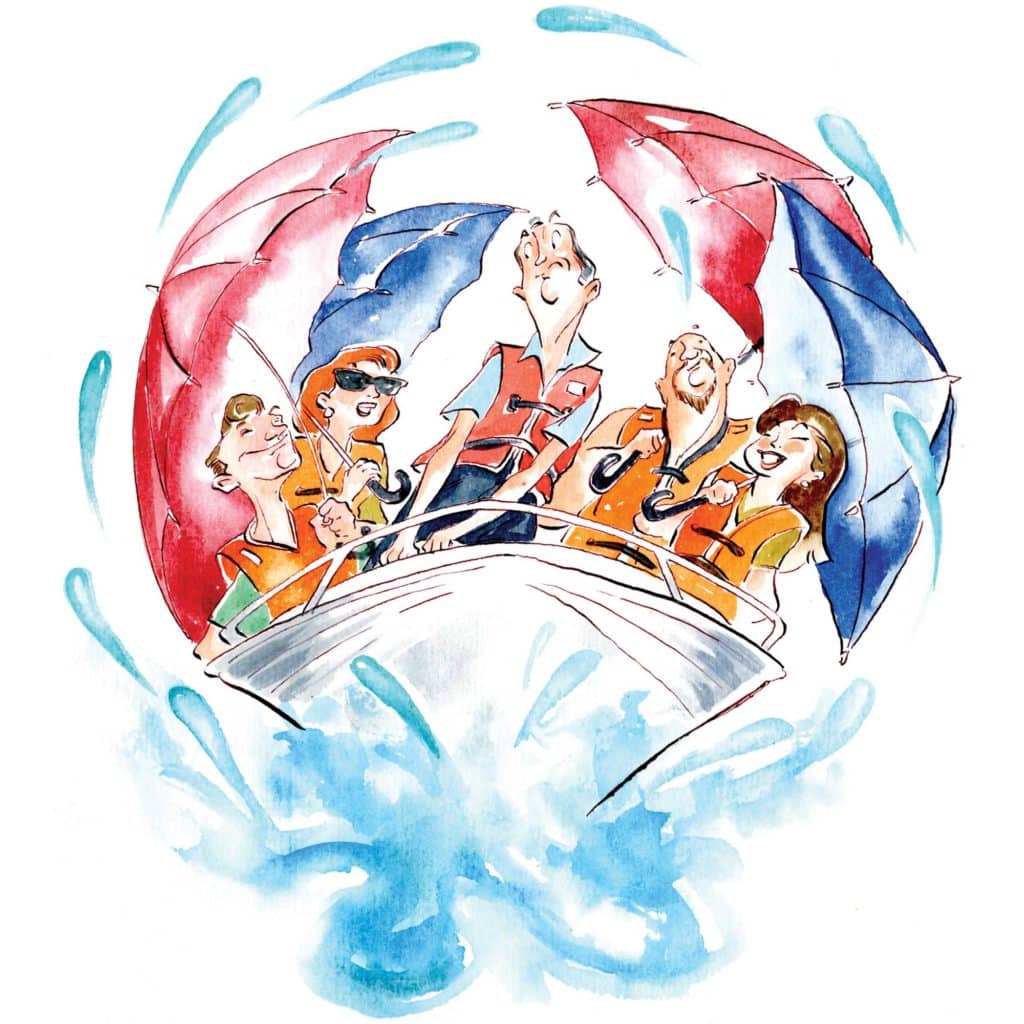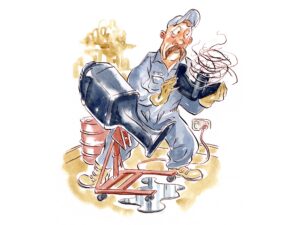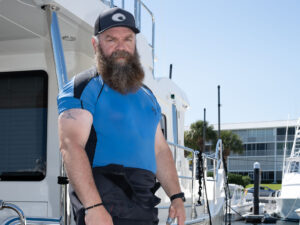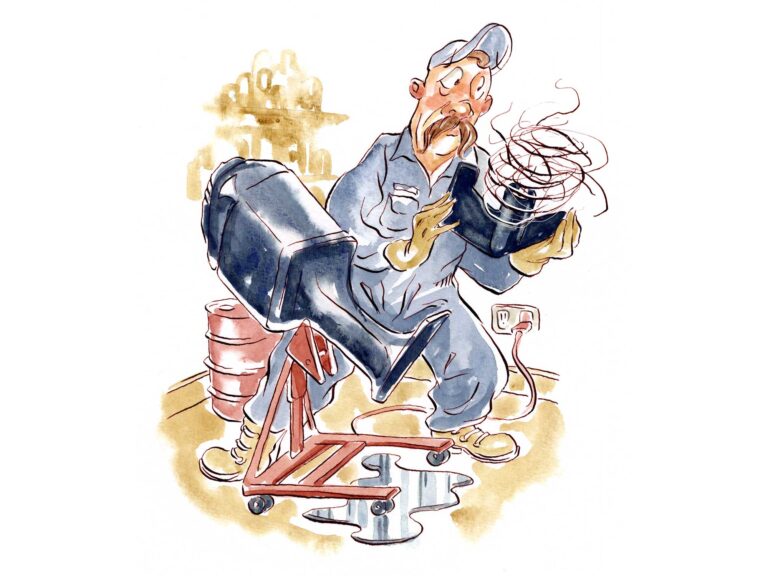
As I swung the wheel and changed course, my buddy John switched positions. He’d been standing on the port side of the console, his right hand on the T-top’s pipework and a Snapple in his left. Now, wordlessly, and with no prompting from me, he’d moved to the starboard-side, where he now held on with his left hand and sipped iced tea from his right. A true switch-hitter.
He’d barely completed the move before a shot of spray came aboard, dappling the port side of the console. John knew that as the boat swung beam-to the wind, the boat would ship spray every few waves, given the boisterous chop in which we were running.
“John” is Capt. John Raguso, who has more sea miles under his boats than most, including yours truly. Keeping your crew safe is the first measure of good seamanship, but keeping your crew comfortable is important too. Even though I am a firm believer in the principle that states those who don’t want to get wet occasionally should choose a different sport than boating, running your boat so as to provide as dry a ride as possible is one mark of good seamanship.
First of all, be aware of where people choose to be aboard your boat. Keeping them dry might be as simple as asking them to move. Most people aboard for the day don’t come with Capt. John’s level of self-sufficiency. It’s your job to move them as your heading changes, the wind or tide shifts, or sea conditions change.
Of course, often you have to take action to stay drier. Slowing down can help keep you dry in a head wind, provided the waves and current are such that you can run slow enough to maintain headway and control. On the other hand, going slow means “breaking” water farther forward on the hull, and can increase the chances of water that’s being thrown up getting blown aboard. So, other times it pays to go faster or trim out the drives a bit to raise the bow higher. Doing either causes water to break farther aft along hull, decreasing the chances of water blowing aboard. However, too much trim or too much speed might result in pounding or porpoising. On many occasions, the choice is not between tuning the boat for a comfortable ride or an uncomfortable one, but rather balancing the levels of several causes of discomfort against the experience of the crew you have aboard, the abilities of the boat, and the amount of time for which you need to endure the discomfort.
Read Next: How to Take on a Head Sea
In short, it might prove most beneficial to run so you have achieved, if not a truly dry ride, at least a drier ride, and one that doesn’t come at the expense of too much slapping or too much Sea World behavior from your boat.
Keeping the boat level across the beam ensures it will throw equal amounts of water to each side. The converse of this is that a boat will throw more spray on the side that is most immersed. Use this to your advantage by trimming the boat — either with trim tabs, engine/drive trim or by shifting weight and crew — so it is higher on the windward side. Doing so helps keep more spray out, though it will require more concentration and effort to hold your heading. It’s a great technique, especially when running on one of the wettest headings of all: wind and sea striking your boat on the transom corner.
All of this advice is to be taken in measure against the myriad variables you, as skipper, face on any given day on the water. Implement them incrementally until you find the groove of the moment.








